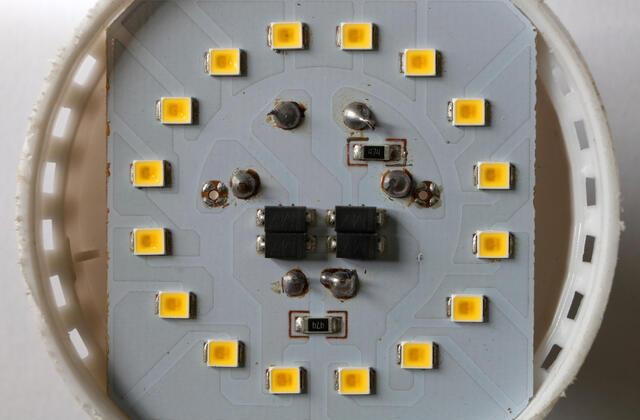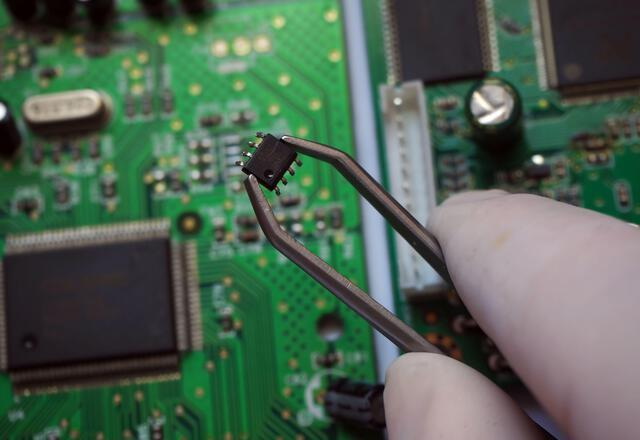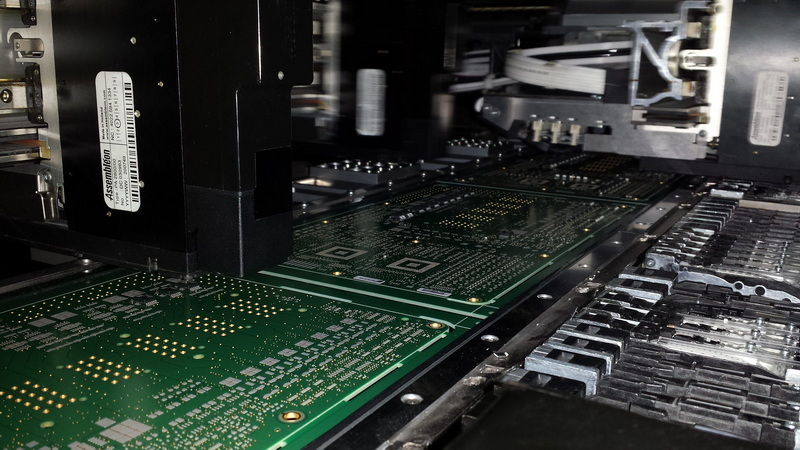Content Menu
● Understanding SMT and THT
>> Surface Mount Technology (SMT)
>> Through-Hole Technology (THT)
● Advantages of Using SMT Components on Through-Hole PCBs
● Challenges and Considerations
● Applications Benefiting from Hybrid Designs
● Best Practices for Implementing SMT on Through-Hole PCBs
● Future Trends in PCB Technology
● Conclusion
● FAQ
>> 1. What is the main advantage of using SMT over THT?
>> 2. Can I use both SMT and THT on the same PCB?
>> 3. How does using SMT improve signal integrity?
>> 4. What industries benefit most from hybrid PCB designs?
>> 5. Are there any downsides to using SMT components?
● Citations:
In the realm of printed circuit board (PCB) design and manufacturing, two primary technologies dominate: Surface Mount Technology (SMT) and Through-Hole Technology (THT). Each method has its own set of advantages and applications, but the integration of SMT components into through-hole PCBs is becoming increasingly popular due to several compelling benefits. This article explores the advantages of using SMT components on through-hole boards, highlighting how this combination can enhance performance, reliability, and efficiency in electronic designs.

Understanding SMT and THT
Surface Mount Technology (SMT)
SMT involves placing components directly onto the surface of a PCB. Unlike traditional through-hole components, which require leads to be inserted into drilled holes, SMT components are soldered onto pads on the board's surface. This method allows for a more compact design, enabling higher component density and reduced board size.
Through-Hole Technology (THT)
Through-hole technology involves inserting component leads through holes drilled in the PCB. This method provides strong mechanical connections and is often preferred for components that will experience significant mechanical stress or require high reliability, such as connectors and power components.
Advantages of Using SMT Components on Through-Hole PCBs
The integration of SMT components into through-hole designs offers numerous advantages:
- Increased Component Density: SMT components are generally smaller than their through-hole counterparts. This allows for a greater number of components to fit within the same PCB area, facilitating more complex circuit designs without increasing board size.
- Improved Performance: The shorter leads of SMT components reduce inductance and capacitance, leading to better signal integrity. This is particularly important in high-frequency applications where signal distortion can be detrimental.
- Cost Efficiency: Utilizing SMT can lower manufacturing costs due to reduced material usage and less waste. The smaller footprint of SMT components means less drilling and fewer materials are needed for PCB fabrication.
- Enhanced Reliability: While THT provides robust mechanical connections, modern SMT techniques have improved the durability of these components. Many SMT parts are designed to withstand environmental stresses, making them suitable for various applications.
- Faster Assembly Processes: Automated assembly processes for SMT are typically quicker than manual through-hole assembly. This leads to shorter production times and faster time-to-market for new products.
- Flexibility in Design: The ability to mix SMT and THT on the same board allows designers to optimize their layouts based on specific component requirements. For instance, critical high-stress components can be placed using THT while less critical ones can utilize SMT.
- Better Thermal Management: The compact nature of SMT allows for improved thermal dissipation in densely packed circuits. This is crucial in preventing overheating and ensuring long-term reliability.
- Reduced Manufacturing Complexity: By combining both technologies, manufacturers can streamline production processes while maintaining flexibility in design choices. This hybrid approach can simplify inventory management as well since it allows for a wider range of component types.
Challenges and Considerations
While there are significant advantages to using SMT components on through-hole PCBs, there are also challenges that manufacturers must consider:
- Mechanical Strength: Although advancements have been made, THT still offers superior mechanical strength due to the leads being embedded within the PCB. Care must be taken when selecting which components to mount using each technology based on application needs.
- Repairability: Through-hole components are typically easier to replace or repair due to their larger size and accessibility. In contrast, SMT components may require specialized equipment for rework or replacement.
- Design Complexity: Integrating both technologies can complicate the design process. Designers must ensure that layout considerations account for both types of mounting methods, which may require additional planning and testing.

Applications Benefiting from Hybrid Designs
The combination of SMT and THT is particularly beneficial in several applications:
- Consumer Electronics: Many consumer devices require compact designs with high functionality. Utilizing both technologies allows manufacturers to create efficient layouts that meet these demands.
- Automotive Electronics: In automotive applications where reliability is critical, combining THT for high-stress components with SMT for smaller parts can enhance overall performance while maintaining durability.
- Aerospace and Defense: These industries often require robust solutions capable of withstanding harsh environments. A hybrid approach allows engineers to leverage the strengths of both mounting technologies effectively.
- Medical Devices: Medical electronics often need rigorous standards regarding reliability and performance. The combination of SMT and THT can help meet these stringent requirements while optimizing space on PCBs.
- Telecommunications Equipment: In telecommunications, where signal integrity is paramount, using SMT can help reduce noise and interference while allowing for a compact design that accommodates numerous functionalities.
Best Practices for Implementing SMT on Through-Hole PCBs
To successfully implement SMT components on through-hole PCBs, manufacturers should consider several best practices:
1. Design Optimization: Utilize design software that supports mixed technology layouts. Ensure that both types of components are strategically placed based on their thermal and electrical characteristics.
2. Component Selection: Choose components that complement each other in terms of performance requirements. For high-stress applications, ensure that THT parts are used where necessary while taking advantage of the compactness offered by SMT elsewhere.
3. Testing and Validation: Conduct thorough testing during the prototyping phase to ensure that the hybrid design meets all functional requirements. Validate signal integrity and thermal performance under expected operating conditions.
4. Soldering Techniques: Employ appropriate soldering techniques tailored for each type of component. For instance, wave soldering may be more suitable for THT parts, while reflow soldering is typically used for SMT.
5. Quality Control Measures: Implement strict quality control measures throughout the manufacturing process to ensure that both types of components are properly soldered and functioning as intended.
Future Trends in PCB Technology
As technology continues to evolve, several trends may influence the future use of SMT components on through-hole boards:
- Miniaturization: The demand for smaller electronic devices will drive further advancements in miniaturization techniques for both SMT and THT components, allowing even greater integration on PCBs.
- Smart Manufacturing: The rise of Industry 4.0 will lead to smarter manufacturing processes that leverage automation and data analytics to optimize PCB production efficiency.
- Sustainability Initiatives: Increased focus on sustainability will push manufacturers towards eco-friendly materials and processes in PCB production while maintaining performance standards.
- Advanced Materials: Innovations in materials science may lead to new substrates that enhance thermal management capabilities or improve signal integrity across mixed technology designs.
Conclusion
The integration of SMT components into through-hole PCBs presents a multitude of advantages that enhance performance, reliability, and efficiency in electronic designs. As technology continues to advance, the ability to combine these two methods will allow manufacturers to produce more sophisticated products that meet the ever-evolving demands of various industries. By understanding the benefits and challenges associated with this hybrid approach, designers can make informed decisions that lead to successful outcomes in their projects.

FAQ
1. What is the main advantage of using SMT over THT?
The primary advantage of using Surface Mount Technology (SMT) over Through-Hole Technology (THT) is the ability to achieve higher component density on PCBs due to smaller component sizes and reduced space requirements.
2. Can I use both SMT and THT on the same PCB?
Yes, you can use both SMT and THT on the same PCB design. This hybrid approach allows you to leverage the strengths of each technology based on specific component requirements.
3. How does using SMT improve signal integrity?
SMT improves signal integrity by minimizing lead lengths, which reduces inductance and capacitance in high-frequency applications, leading to better overall performance.
4. What industries benefit most from hybrid PCB designs?
Industries such as consumer electronics, automotive electronics, aerospace, defense, medical devices, and telecommunications benefit significantly from hybrid PCB designs due to their need for compactness combined with reliability.
5. Are there any downsides to using SMT components?
While there are many benefits to using SMT components, they may be less mechanically robust than through-hole components and can be more challenging to repair or replace once soldered onto a PCB.
Citations:
[1] https://www.protoexpress.com/blog/good-not-so-good-sides-surface-mount-technology/
[2] https://www.candorind.com/blog/surface-mount-vs-through-hole/
[3] https://blog.thedigisource.com/through-hole-smt
[4] https://www.sonicmfg.com/what-are-the-advantages-of-surface-mount-technology-in-pcba/
[5] https://www.epectec.com/articles/differences-between-through-hole-and-surface-mount-pcb-designs.html
[6] https://www.viasion.com/blog/smt-assembly-vs-through-hole-assembly-their-pros-and-cons/
[7] https://www.wevolver.com/article/through-hole-vs-surface-mount-unveiling-the-optimal-pcb-assembly-technique
[8] https://www.vse.com/blog/2021/11/11/advantages-of-through-hole-technology-its-not-dead-yet/
[9] https://www.viasion.com/blog/through-hole-assembly-vs-smt-assembly/
[10] https://www.advancedpcb.com/en-us/blog/navigating-the-choice-between-surface-mount-devices-and-through-hole-components/
[11] https://electronics.stackexchange.com/questions/633875/are-surface-mount-or-through-hole-connections-more-reliable-for-safety-critical
[12] https://emsginc.com/resources/surface-mounting-vs-thru-hole-manufacturing/




















